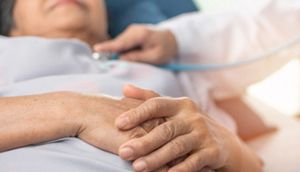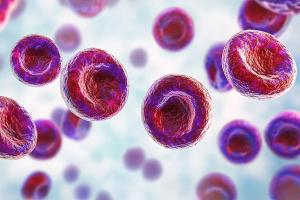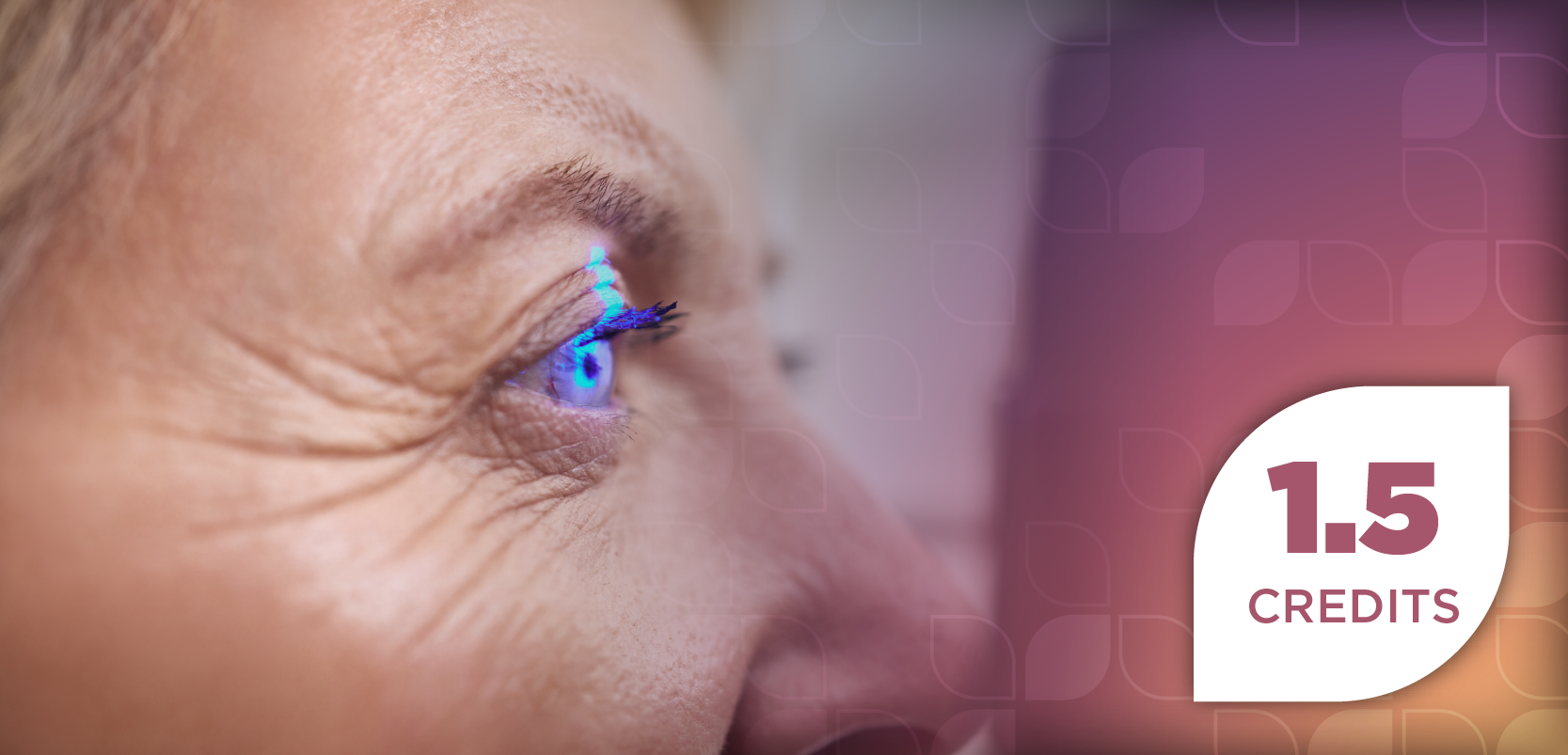Denosumab Biosimilars Approved With Interchangeability to Address Osteoporosis, Fracture Risk
The FDA approved Ospomyv and Xbryk, denosumab biosimilars that could expand access to treatment for osteoporosis, cancer-related bone loss, and other endocrine diseases.
Ospomyv (denosumab-dssb) and Xbryk (denosumab-dssb), biosimilars to Prolia and Xgeva, respectively, received FDA approval for treating osteoporosis and bone loss.1
Samsung Bioepis announced that the FDA granted interchangeability designation for both Ospomyv (60 mg prefilled syringe) and Xbryk (120 mg vial), marking the company’s first approval for an endocrinology biosimilar.
Ospomyv, a biosimilar to Prolia, treats osteoporosis in postmenopausal women at high risk for fracture, increases bone mass in men at high risk for fracture (including those receiving androgen deprivation therapy for nonmetastatic prostate cancer), and boosts bone mass in women at high risk for fracture receiving adjuvant aromatase inhibitor therapy for breast cancer.2
Xbryk prevents skeletal-related events in patients with multiple myeloma and in patients with bone metastases from solid tumors. It also treats adults and skeletally mature adolescents with giant cell tumors in the bone that are unresectable or where surgical resection is likely to result in severe morbidity. Additionally, it treats hypercalcemia of malignancy refractory to bisphosphonate therapy.
“The FDA approval of Ospomyv and Xbryk marks a key step in improving patient access and alleviating treatment costs for patients with osteoporosis and cancer-related bone loss in the US,” Byoungin Jung, vice president and regulatory affairs team leader at Samsung Bioepis, said in a statement.1
A phase 1 study (NCT04621318) showed equivalence between the biosimilar denosumab, the European-sourced denosumab, and the US-sourced version among healthy male participants.3 The study randomized healthy male participants to receive a single 60-mg dose of either denosumab-dssb, the EU denosumab, or the US denosumab. The study met the primary end point in terms of area under the concentration-time curve (AUC) from time zero to infinity, AUC from time zero to the last quantifiable concentration, and maximum serum concentration.
A phase 3 study (NCT04664959) demonstrated equivalent efficacy and comparable safety, immunogenicity, pharmacokinetics, and pharmacodynamic profiles between denosumab-dssb and reference denosumab in patients with postmenopausal osteoporosis.4 Researchers randomized patients 1:1 to receive either 60 mg denosumab-dssb or reference denosumab subcutaneously at months 0 and 6.
At month 12, researchers rerandomized patients to either continue with the assigned treatment or switch from the reference product to the biosimilar up to month 18. The study met the primary end point of percent change at baseline in lumbar spine bone mineral density at month 12. Follow-up data up to month 18 showed comparable efficacy, pharmacokinetics, pharmacodynamics, safety, and immunogenicity after switching to denosumab-dssb from the reference product.
Patients with postmenopausal osteoporosis who received Ospomyv experienced several common adverse events (AEs), including back pain, extremity pain, hypercholesterolemia, musculoskeletal pain, and cystitis.2 Men with osteoporosis experienced back pain, arthralgia, and nasopharyngitis (> 5%). Back pain, hypertension, bronchitis, and headache were the most common AEs in patients with glucocorticoid-induced osteoporosis.
Patients with bone metastasis from solid tumors who received Xbryk experienced fatigue, hypophosphatemia, and nausea as common AEs. Patients with multiple myeloma experienced diarrhea, nausea, anemia, back pain, thrombocytopenia, peripheral edema, hypocalcemia, upper respiratory tract infection, rash, and headache. Patients with giant cell tumors of bone and hypercalcemia of malignancy experienced similar AEs.
Samsung Bioepis’ FDA approval for both denosumab biosimilarsmarks the company’s ninth and tenth approved medications.1 This achievement has the potential to expand patient access to biosimilar treatments in this therapeutic space.
References
- FDA approves Samsung Bioepis’ Ospomyv, Xbryk (denosumab-dssb), a biosimilar to Prolia and Xgeva. News release. Business Wire; February 15, 2025. Accessed February 17, 2025.
https://www.businesswire.com/news/home/20250215814020/en/FDA-Approves-Samsung-Bioepis%E2%80%99-OSPOMYV%E2%84%A2-XBRYK%E2%84%A2-denosumab-dssb-a-Biosimilar-to-Prolia-and-Xgeva - Denosumab-dssb. FDA. February 2025. Accessed February 17, 2025.
https://www.accessdata.fda.gov/drugsatfda_docs/label/2025/761392Orig1s000lbl.pdf - Lee HA, Kim S, Seo H, Kim S. A phase I, randomized, double-blind, single-dose pharmacokinetic study to evaluate the biosimilarity of SB16 (proposed denosumab biosimilar) with reference denosumab in healthy male subjects. Expert Opin Investig Drugs. 2023;32(10):959-966. doi:10.1080/13543784.2023.2273510
- Langdahl B, Chung YS, Plebanski R, et al. Proposed denosumab biosimilar SB16 vs reference denosumab in postmenopausal osteoporosis: phase 3 results up to month 12. J Clin Endocrinol Metab. Published online September 7, 2024. doi:10.1210/clinem/dgae611
Newsletter
Stay ahead of policy, cost, and value—subscribe to AJMC for expert insights at the intersection of clinical care and health economics.
Related Articles
 AML Survival After 3 Years in Remission Comparable With General Population
AML Survival After 3 Years in Remission Comparable With General PopulationSeptember 20th 2025
 AHA Launches New Initiative to Help Patients With Heart Failure
AHA Launches New Initiative to Help Patients With Heart FailureSeptember 20th 2025
 CSU More Burdensome in Female Patients, Especially in Midlife
CSU More Burdensome in Female Patients, Especially in MidlifeSeptember 20th 2025
 Pirtobrutinib Shows Clinically Meaningful PFS Improvement in Frontline CLL
Pirtobrutinib Shows Clinically Meaningful PFS Improvement in Frontline CLLSeptember 19th 2025
 Rocatinlimab AD Combo Therapy Safe, Effective Over 24 Weeks
Rocatinlimab AD Combo Therapy Safe, Effective Over 24 WeeksSeptember 19th 2025
















































